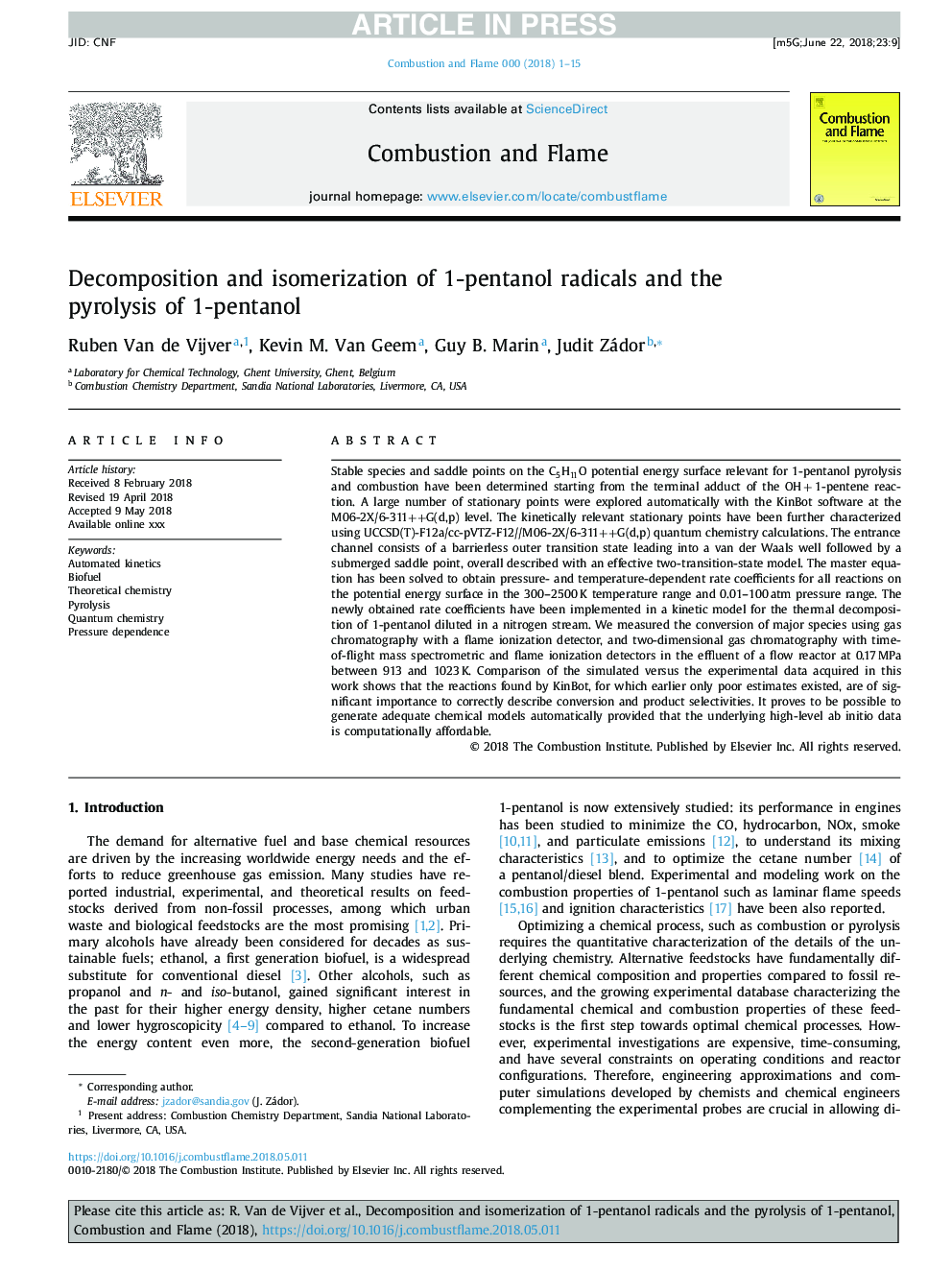| Article ID | Journal | Published Year | Pages | File Type |
|---|---|---|---|---|
| 11000322 | Combustion and Flame | 2018 | 15 Pages |
Abstract
Stable species and saddle points on the C5H11O potential energy surface relevant for 1-pentanol pyrolysis and combustion have been determined starting from the terminal adduct of the OHâ¯+â¯1-pentene reaction. A large number of stationary points were explored automatically with the KinBot software at the M06-2X/6-311++G(d,p) level. The kinetically relevant stationary points have been further characterized using UCCSD(T)-F12a/cc-pVTZ-F12//M06-2X/6-311++G(d,p) quantum chemistry calculations. The entrance channel consists of a barrierless outer transition state leading into a van der Waals well followed by a submerged saddle point, overall described with an effective two-transition-state model. The master equation has been solved to obtain pressure- and temperature-dependent rate coefficients for all reactions on the potential energy surface in the 300-2500â¯K temperature range and 0.01-100â¯atm pressure range. The newly obtained rate coefficients have been implemented in a kinetic model for the thermal decomposition of 1-pentanol diluted in a nitrogen stream. We measured the conversion of major species using gas chromatography with a flame ionization detector, and two-dimensional gas chromatography with time-of-flight mass spectrometric and flame ionization detectors in the effluent of a flow reactor at 0.17â¯MPa between 913 and 1023â¯K. Comparison of the simulated versus the experimental data acquired in this work shows that the reactions found by KinBot, for which earlier only poor estimates existed, are of significant importance to correctly describe conversion and product selectivities. It proves to be possible to generate adequate chemical models automatically provided that the underlying high-level ab initio data is computationally affordable.
Related Topics
Physical Sciences and Engineering
Chemical Engineering
Chemical Engineering (General)
Authors
Ruben Van de Vijver, Kevin M. Van Geem, Guy B. Marin, Judit Zádor,
